49 Days of Meditation Images Dawing Easy to Dra
Meditation for kids is a powerful life skill. And when children learn how to practice mindfulness and meditation at a young age, we can plant seeds that grow and bear fruit throughout their whole life.
Table of Contents
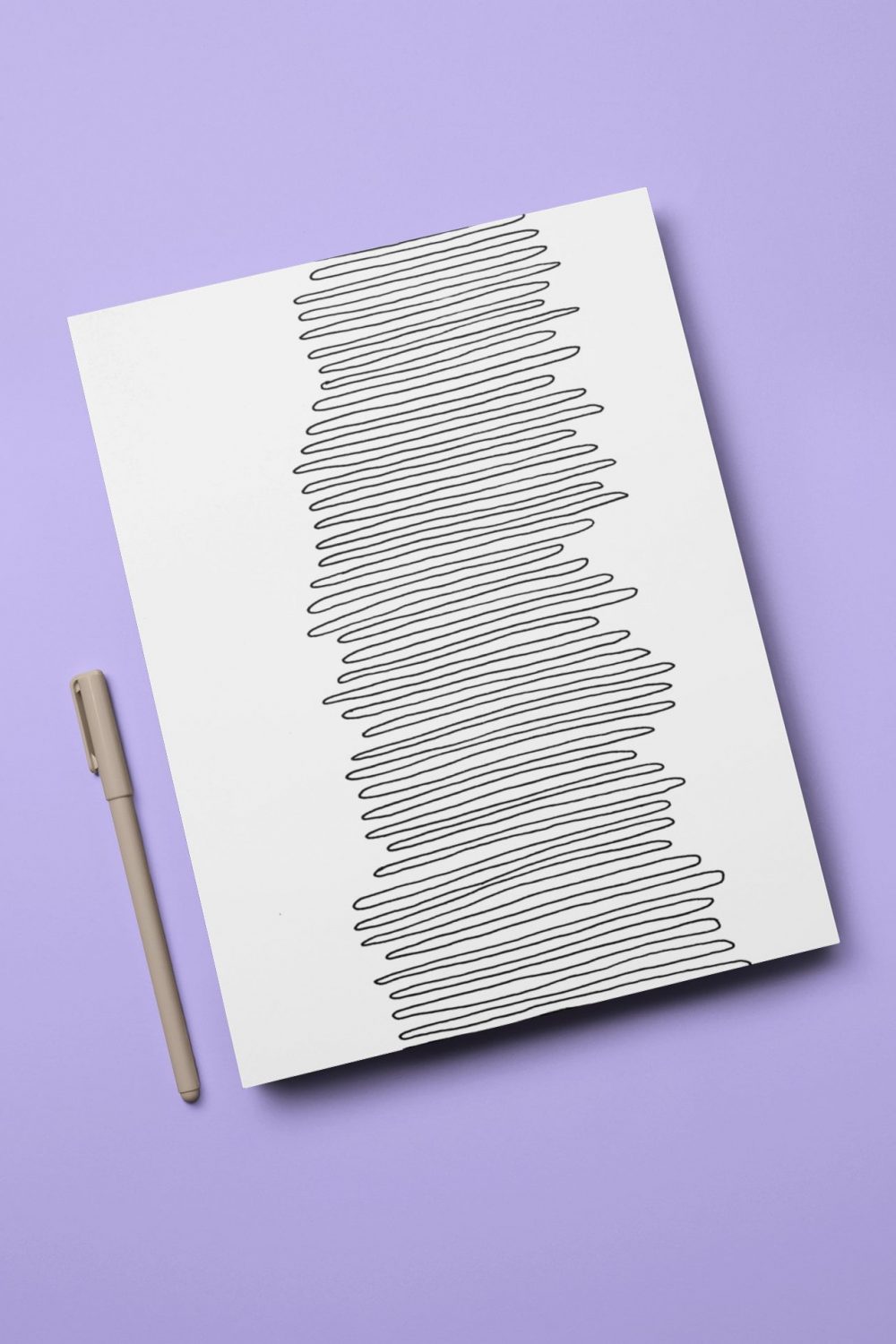
What is Meditation?
Catherine Wilde , Kids Yoga & Meditation Teacher, defines meditation as "the process of turning inward, calming the mind, and practicing presence." Techniques, such as mindfulness, can be utilized to assist your children in calming their mind and bringing awareness to the present moment.
Mindfulness meditation involves paying attention to the breath, which allows children to concentrate on the here and now, instead of their anxieties or stressors. By focusing on their breathing, your children can become more synched with their body and mind, while learning how to observe their thoughts.
When I begin a mindfulness meditation with my kids and students, I simply say that we will be practicing how to pay attention to our breathing, right here, right now, with love and curiosity. The process should be relaxing and enjoyable. Children need to know that getting distracted while meditating is normal but they can lovingly bring their attention back to their breath with kindness and understanding.
Related: Mindfulness Coloring – Free Coloring Sheets
This drawing meditation is intended to help children bring a little more awareness and attention to their breath; to create a few calming moments - a simple practice that you could incorporate into any part of their day.
This post may contain affiliate links and I may earn a small commission when you click on the links at no additional cost to you. As an Amazon Affiliate, I earn from qualifying purchases. You can read my full disclaimer here .
Why Your Kids Should be Meditating (5 Benefits)
There are numerous reasons why you should help your children adopt a simple meditative practice. I've chosen 5 incredible benefits for you to consider.
1. Meditation Reduces Stress & Anxiety
Meditation affects the body in exactly the opposite ways that stress does—by triggering the body's relaxation response. It restores the body to a calm state, helping the body repair itself. Meditating can drastically reduce stress and anxiety in children. Teaching children how to focus on their breath and observe their thoughts can provide them with the necessary tools to return to the calming present moment at any time.
2. Meditation Increases Self-awareness and Self-regulation
Mindfulness meditation allows kids to be more self-aware, which can positively impact their ability to self-regulate. According to Dr. Jeremy Smith, "It does a lot for self-regulation. Kids that are really impulsive can learn to develop that pause between stimulus and reaction. Then they have the skills to realize when they're angry, when they feel stress arising. And they have the skills to de-escalate themselves."
In other words, if children learn to be more aware of their thought processes and reactions in the present moment, they will be better equipped to control their emotions and reactive behavior.
3. Meditation Teaches Kids how to Breathe
Deep breathing, which is characteristic of many meditation practices, is incredibly helpful to our health. Taking deep breaths can reduce stress and anxiety; It can also help kids improve their attention span and lower pain levels. These benefits can be experienced by adults as well, so learning how to breathe well can be something that you practice with your children or students. Learning how to do this at an early age can help our children deal with the stressors of life more effectively.
4. Meditation Changes the Brain
Meditation affects different parts of the brain, including the parietal lobe. Activity in the parietal lobe slows down during meditation, and children are able to process information more clearly.
Scientific studies have consistently shown that when children practice meditation on a regular basis, it can change the brain. The brain's ability to change is known as neuroplasticity. Several areas of the brain actually become larger after meditation, such as the hippocampus and the fight-or-flight response system in the amygdala. Through meditation, brain centers for emotions and executive functioning can improve concentration and reduce impulsivity. To learn more about the connection between meditation and neuroplasticity and to take advantage of the neuroplasticity that mindfulness meditation brings, check out this PDF from Harvard Health.
5. Meditation Improves Sleep
You may be wondering if meditation can truly help your child with sleep. Well, rest assured, studies show that it definitely can be beneficial.
Researchers believe that meditation can help with sleep in a variety of ways. Most sleep problems stem from stress and worry. Since meditation helps reduce stress and anxiety, having a few mindful moments before bedtime can result in more restful sleep. Meditation may also increase melatonin (the sleep hormone) and may also increase serotonin (the precursor to melatonin). Getting the right hormones flowing can increase how quickly your children fall asleep as well as the length and quality of their sleep.
2 Interactive Books on Mindful Breathing for Kids
I love a good book! Books are a great tool for introducing and reinforcing new concepts to kids in engaging ways. If your children or students are new to the idea of mindfulness, meditation, or mindful breathing, these 2 books can be used as a beautiful introduction to the practices.

My Magic Breath – Finding Calm Through Mindful Breathing by Nick Ortner and Alison Taylor
My Magic Breath reminds us how magical our breath can be. This interactive picture book invites children to breathe along as they go through the pages. By the end of your book, your young reader will learn how to make sad or angry thoughts powerless, just by using their magical breath. This book is a must have if you are trying to find a gentle way to introduce mindfulness or meditation to your kids.

Breathe Like a Bear: 30 Mindful Moments for Kids to Feel Calm and Focused Anytime, Anywhere by Kira Willy
Breathe Like a Bear guides us through fun exercises to help us relax and stretch our imaginations. This super cute book includes 30 differentmindfulness activities that will help you and your child connect to yourselves and each other. Most importantly, these short breathing practices and movements can be used in any situation, anywhere to help your kids with emotional and self-regulation.
Drawing Meditation Overview
When introducing a meditative practice to your kids, you might find that this drawing meditation can sometimes feel more accessible for them; It can also be fun for them to watch the beautiful pattern that is created by their breath.
YouTube Video Tutorial
Here is our video tutorial that will walk you through the draw your breath meditation. My 10 year old daughter, Chanel is demonstrating how to complete it.
Appropriate for Children Ages 4 and up
Prep Time: 2 minutes
For today's draw your breath meditation you'll need:
- A half/full sheet of paper (we used a ½ sheet of black cardstock) – landscape orientation. We chose to use black paper because we liked the contrast it created; it was as if we were breathing life into the black paper.
- Pencil or something to draw with (we used Gelly Roll gel pens)
- Timer (optional – you may want to set a timer or allow your Drawing Meditation to naturally come to a close. You may want to note how your child feels both before and after they draw their breath.
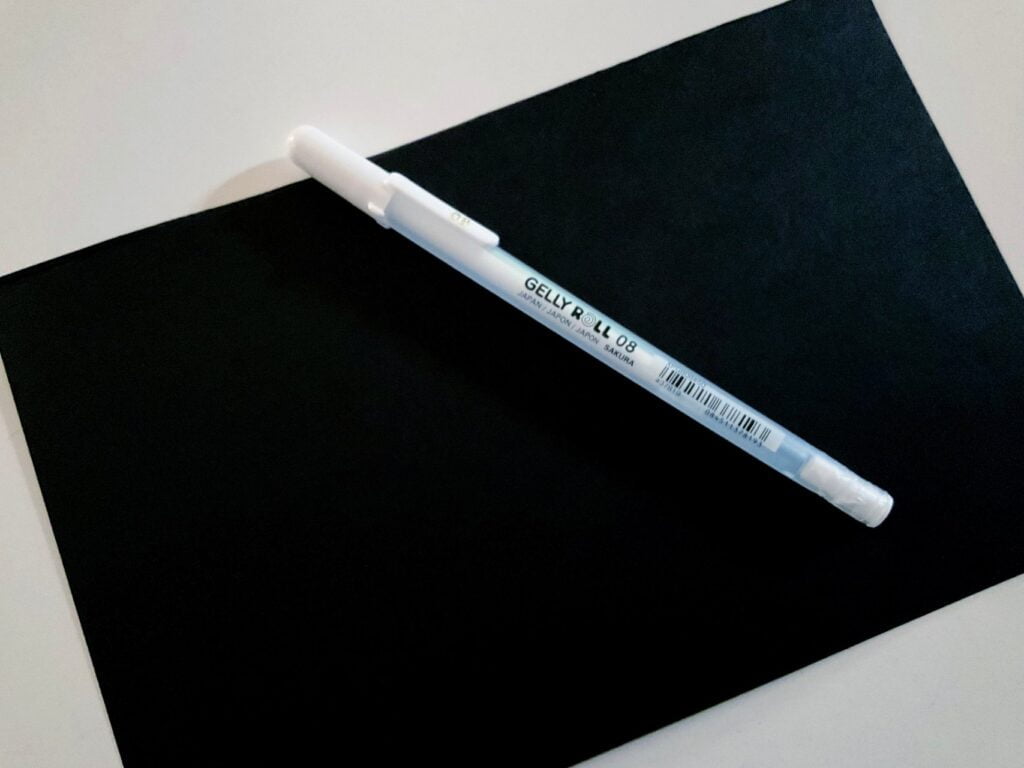
Step 1 – Notice the Breathe
- Ask your child or student to pause and take 3 deep breaths. In through the nose and out through the mouth.
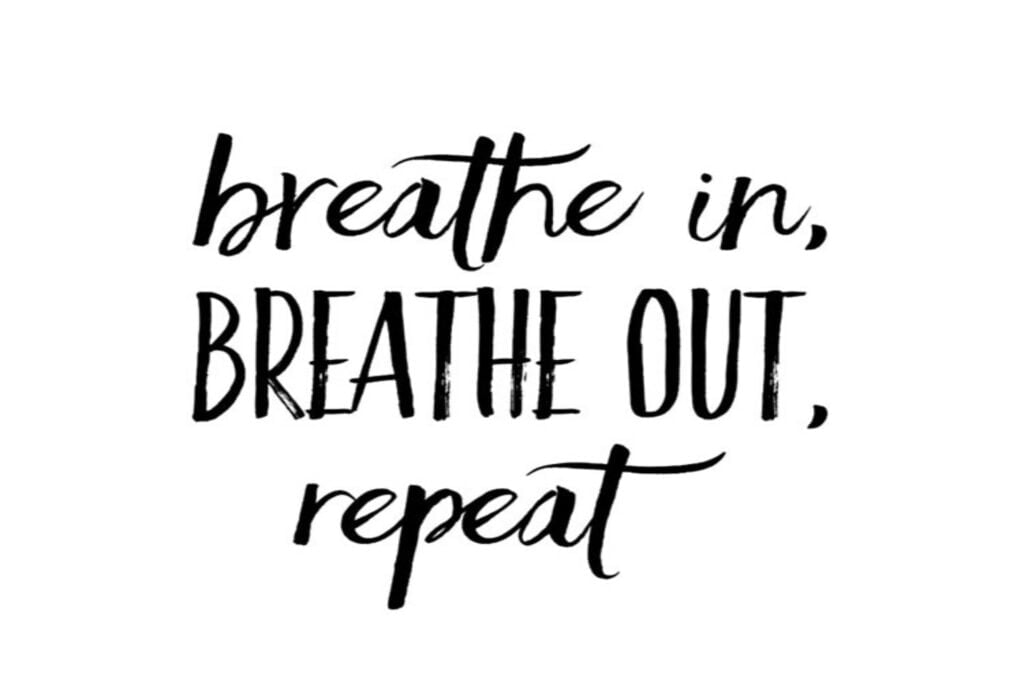
Step 2 – Begin to draw the breathe
- With a relaxed grip, have your child place their pen/pencil on the left side of their paper, in the centre. If your child is left handed, they can start on the right side of their paper.
- When your child inhales, have them draw a line that goes upward. Ask them to gently curve the line at the peak of their inhalation before drawing a line going downwards for their exhalation.
Tip: Encourage your child to try to breathe normally, without trying to control their breath, without trying to make it longer or shorter. The drawing that is created should be a reflection of their natural breathing in that moment. They should allow their breath to lengthen or shorten naturally as they go through the meditation.

Step 3 – Repeat
- Repeat this process. Have them draw rising lines on their inhalation and falling lines on their exhalation.
As your child draws their lines, they might begin to judge the length or straightness of their lines, but encourage them to simply notice any negative thoughts and return back to their breath. Remind them that this is about the process, not perfection.
The image below is the final version of Chanel's, my 10 year old.
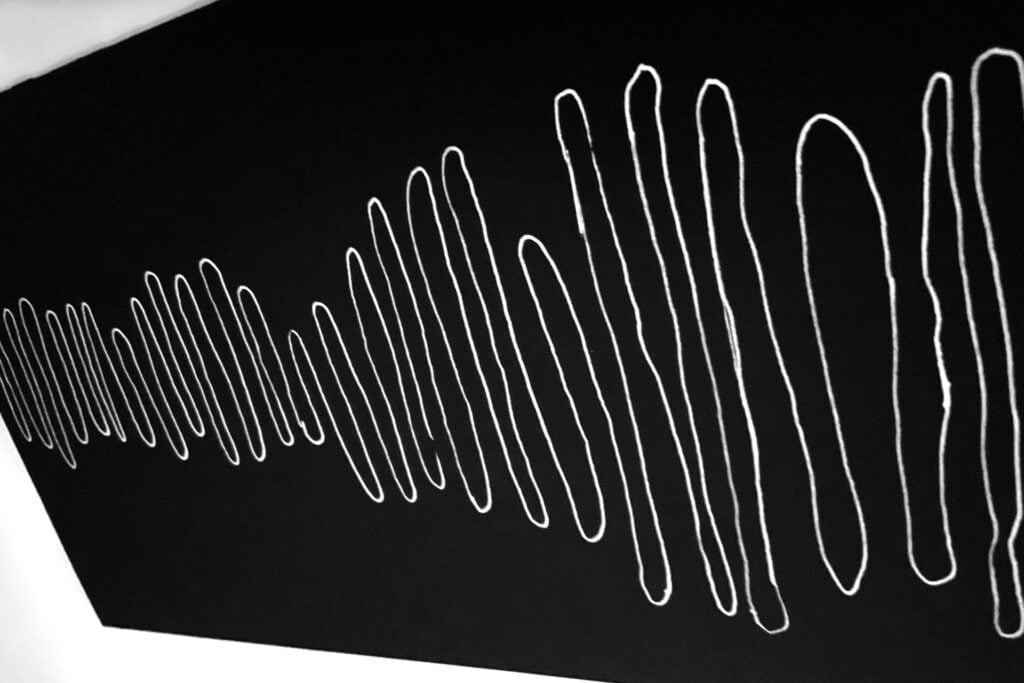
This next one is Chloé's, my 7 year old.
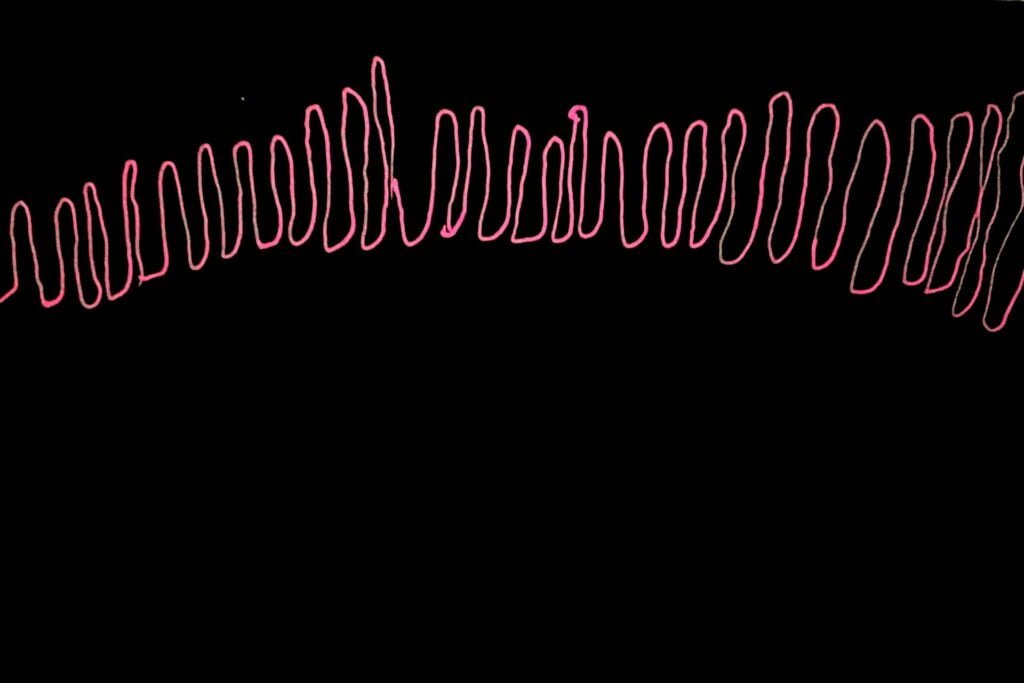
Here are some guiding questions that you might consider asking your child during this drawing meditation.
- How does the pen/pencil feel in your hand?
- How does the pen/pencil feel gliding across the paper?
- What is the texture like?
- What thoughts are going through your mind as you draw?
- How do your body and mind feel?
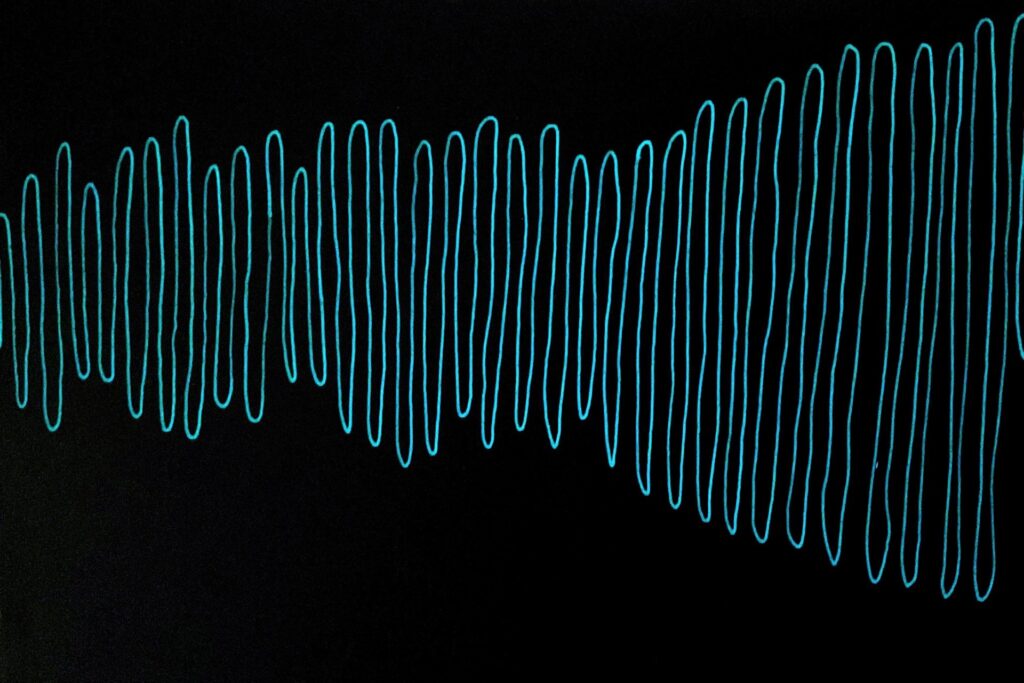

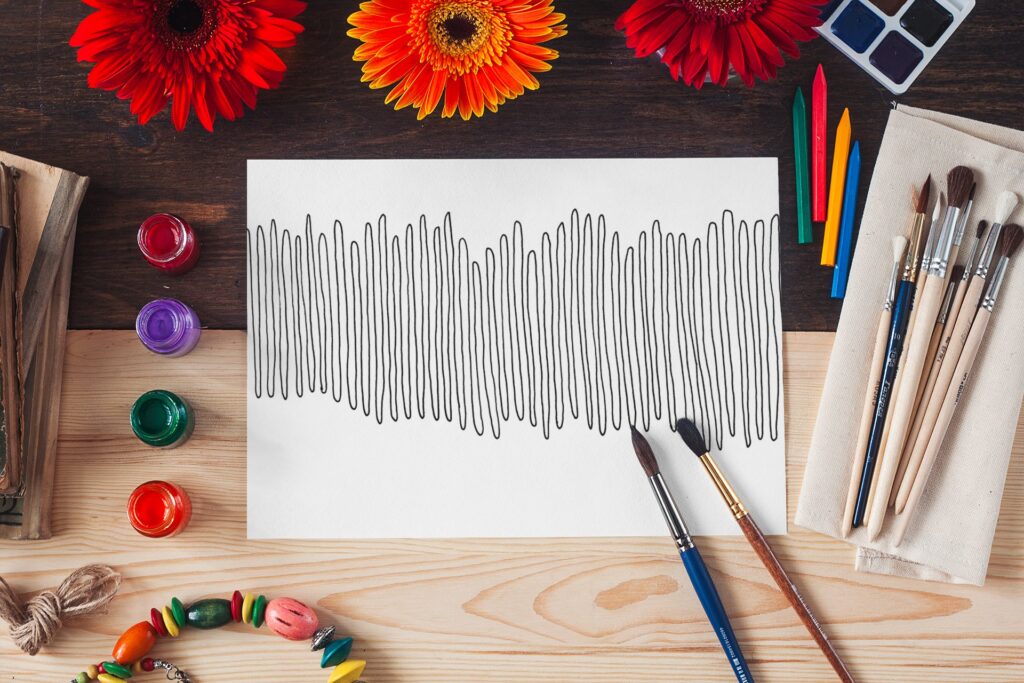
Final Thoughts
This drawing meditation is a gentle activity that you can do with your kids on a regular basis. To help kids take necessary breaks and reduce stress, the American Academy of Pediatrics (AAP) encourages parents to share meditation activities with their children.
More and more schools are implementing meditation practices into their curriculum to help both students and teachers. By incorporating meditation into your child's daily routine , your child will have the opportunity to tap into this valuable skill at a moment's notice to help them find peace and quiet whenever they need it.
This is a great calming activity for when your child is feeling emotionally charged and also when they are already feeling relaxed.
If you try this drawing meditation with your kids or students, please let me know! I'd love to add your creations to our gallery, so upload your photos or send them directly to me at: [email protected] Thank you!
Don't forget to download our free 15 pageMindfulness coloring book to help add a few mindful moments to your child's day. Just click here or the image below!

henryressuffe1977.blogspot.com
Source: https://lightlysketched.com/2021/07/30/mindfulness-drawing-meditation/

Post a Comment for "49 Days of Meditation Images Dawing Easy to Dra"